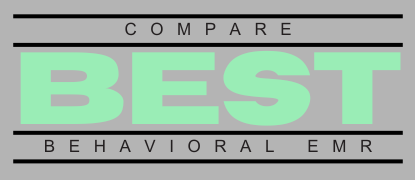Selecting the right behavioral health EMR software is pivotal for streamlining your practice operations, improving patient care, and ensuring compliance. With numerous options available, it can be overwhelming to identify which electronic medical record (EMR) solution is the perfect fit for your practice. In this article, we’ll walk you through five simple and actionable steps to effectively evaluate behavioral health EMR software, empowering you to make a confident and informed choice.
Step 1: Identify Your Practice’s Unique Needs and Challenges
Before you begin to evaluate behavioral health EMR software, it’s crucial to clearly define your practice’s unique requirements and operational challenges. Consider the following points:
- Practice Size and Patient Volume: Is your practice small, mid-sized, or large? Your choice of EMR should scale easily to fit your patient volume and staff size.
- Clinical Specialties and Services Offered: Behavioral health encompasses various specialties, from mental health counseling and psychiatry to addiction treatment and group therapy. Ensure your EMR choice supports your specific clinical workflows and documentation needs.
- Billing and Revenue Cycle Management (RCM): If billing efficiency and accurate reimbursement are key challenges, select an EMR with robust practice management and integrated RCM features.
- Compliance and Security Requirements: Behavioral health providers must comply with HIPAA regulations and confidentiality standards. Your EMR solution should offer reliable security measures and compliance tools. (For more information on compliance requirements, visit the HHS HIPAA compliance page.)
Step 2: Prioritize Features and Functionality
Once you’ve clearly outlined your practice’s needs, prioritize features that directly align with your goals. Some common features you should evaluate in behavioral health EMR software include:
- Customizable Documentation Tools: Templates and notes should be easily customizable, intuitive, and designed specifically for behavioral health professionals.
- Integrated Telehealth: Telehealth capability is essential for today’s behavioral health practices, enabling remote patient interactions.
- Appointment Scheduling and Reminders: Effective appointment management helps reduce no-shows and improve operational efficiency.
- Reporting and Analytics: Robust reporting tools help you track patient outcomes, financial metrics, and productivity, guiding better decision-making.
- Ease of Use and Training: User-friendly interfaces and accessible training resources ensure that your staff can adapt quickly, minimizing disruption.
By clearly prioritizing these features, you can more easily compare EMR vendors and narrow down your shortlist to solutions that match your practice’s requirements.
Step 3: Compare Behavioral Health EMR Software Providers
Now that you’ve identified your needs and prioritized essential features, it’s time to research and compare different behavioral health EMR software providers. Consider these evaluation points:
- Reputation and Customer Reviews: Look at what other behavioral health practitioners say about the vendor’s software and customer support. Check online reviews, testimonials, and industry forums.
- Vendor Experience: Preferably choose vendors with a proven track record of successfully serving behavioral health practices.
- Pricing and Contract Terms: Carefully examine pricing structures, hidden fees, and contract terms. Ensure the software provides good value and transparent pricing.
- Implementation and Data Migration: Evaluate the vendor’s process for migrating existing patient data and implementing their system. Smooth transitions reduce downtime and stress.
For additional insights, check out our article: Top Behavioral Health EMR Features to Consider.
Step 4: Request and Schedule Software Demos
One of the most effective ways to evaluate behavioral health EMR software is through live demonstrations. During demos, pay close attention to:
- Ease of Navigation: Is the software intuitive, easy to understand, and user-friendly?
- Customization Capability: Can the software be easily adapted to your specific workflows and documentation preferences?
- Integrations: Does the EMR seamlessly integrate with other tools your practice relies on, such as CRM software or billing solutions?
- Support and Training Resources: Ask about ongoing support services, training programs, and resource libraries provided by the vendor.
Demonstrations allow you to directly interact with the software and clarify questions or concerns with the vendor representative.
Step 5: Leverage Expert Guidance and Recommendations
Finally, don’t hesitate to seek expert opinions and recommendations. Consulting EMR experts who understand behavioral health practices can be invaluable.
Our team offers a comprehensive free practice analysis to help you identify the best behavioral health EMR solution for your specific needs. By simply filling out a short form, you’ll receive personalized recommendations tailored to your practice, saving you time and ensuring a confident choice.
Conclusion: Confidently Select Your Behavioral Health EMR Software
Evaluating behavioral health EMR software doesn’t have to be overwhelming. By clearly identifying your needs, prioritizing essential features, researching providers, scheduling demos, and leveraging expert guidance, you can confidently select the software that’s the perfect match for your practice.
If you’re ready to take the next step, we invite you to complete our free practice analysis today. Our EMR experts will provide personalized recommendations tailored specifically to your behavioral health practice, making your decision-making process simpler and more effective.
Meta Description: Learn how to evaluate behavioral health EMR software effectively in 5 easy steps and confidently choose the best solution for your practice.
